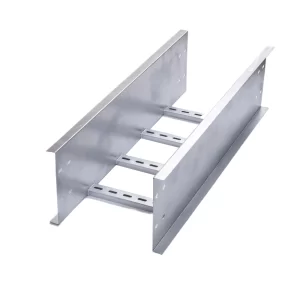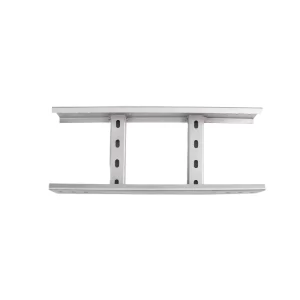Cable trays and ladder trays are both essential components in electrical and communication systems for the organized routing and protection of cables. However, they have distinct characteristics that set them apart.

1. Construction and Design
A cable tray typically has a solid bottom and sides, providing a complete enclosure for the cables. This design offers better protection against dust, debris, and physical damage. For example, in an industrial environment with a lot of airborne contaminants, a cable tray can prevent the cables from being exposed to these elements.
On the other hand, a ladder tray consists of two side rails connected by rungs or cross-members. The open design allows for better ventilation and easier access for inspection and maintenance. This is beneficial in situations where heat dissipation is crucial, such as in data centers with high-density cable installations.
2. Load Capacity
The load-carrying capacity of cable trays and ladder trays can vary. Cable trays are often designed to handle heavier loads due to their solid construction. They can support a greater number of cables or heavier cable bundles without sagging.
Ladder trays, while still capable of carrying significant loads, may have slightly lower capacity compared to cable trays. However, their open design can sometimes distribute the load more evenly along the rungs.
3. Cable Management and Organization
Cable trays are better suited for organizing and containing cables neatly. The solid bottom helps keep the cables in place and reduces the risk of tangling or crossing.
Ladder trays, with their open structure, may require additional cable ties or clips to keep the cables organized. But this openness can make it easier to add or remove cables during installations or modifications.

4. Installation and Cost
Installing a cable tray can be more straightforward as it is a more self-contained unit. However, it may require more material and labor, which can increase the overall cost.
Ladder trays, due to their simpler design and lighter weight, may be quicker and easier to install, especially in large-scale projects. This can result in potential cost savings in terms of installation time and labor.
5. Applications
Cable trays are commonly used in areas where protection and containment of cables are paramount, such as in factories, commercial buildings, and power plants.
Ladder trays are frequently preferred in environments where ventilation, accessibility, and flexibility are important, like telecommunications facilities and data centers.
In conclusion, the choice between a cable tray and a ladder tray depends on various factors such as the specific application, load requirements, cable management needs, installation conditions, and budget. Understanding these differences is crucial for making an informed decision to ensure the efficient and safe routing of cables in any electrical or communication system.
